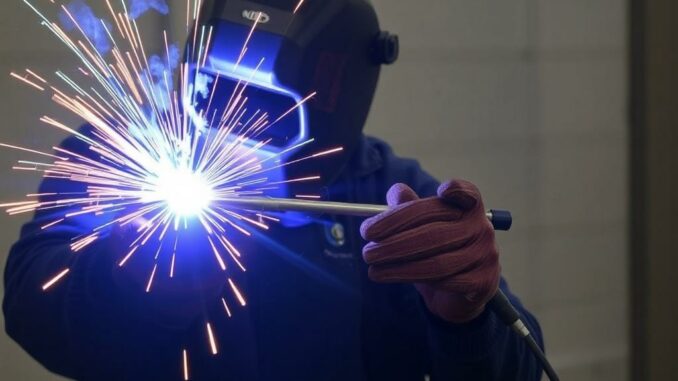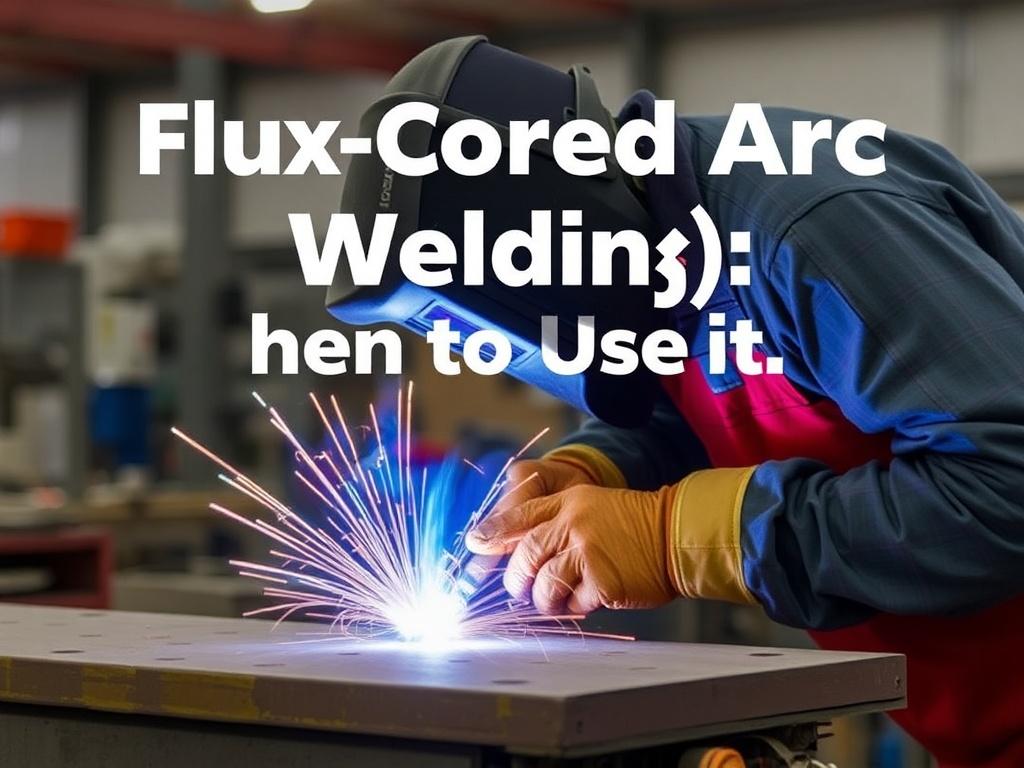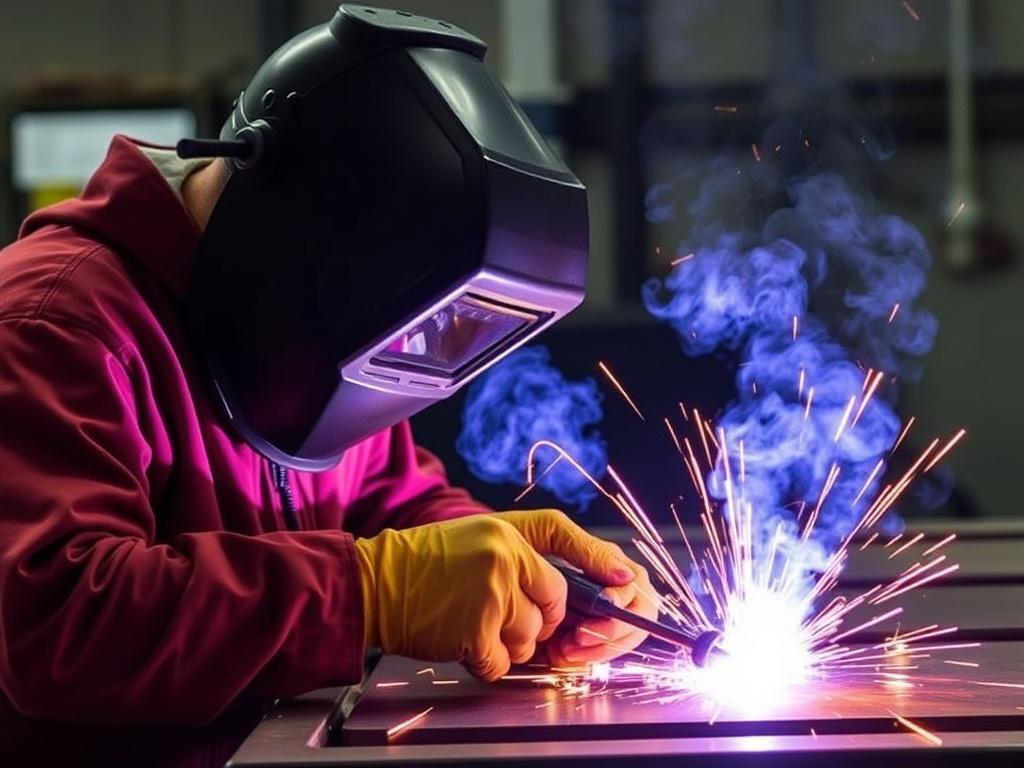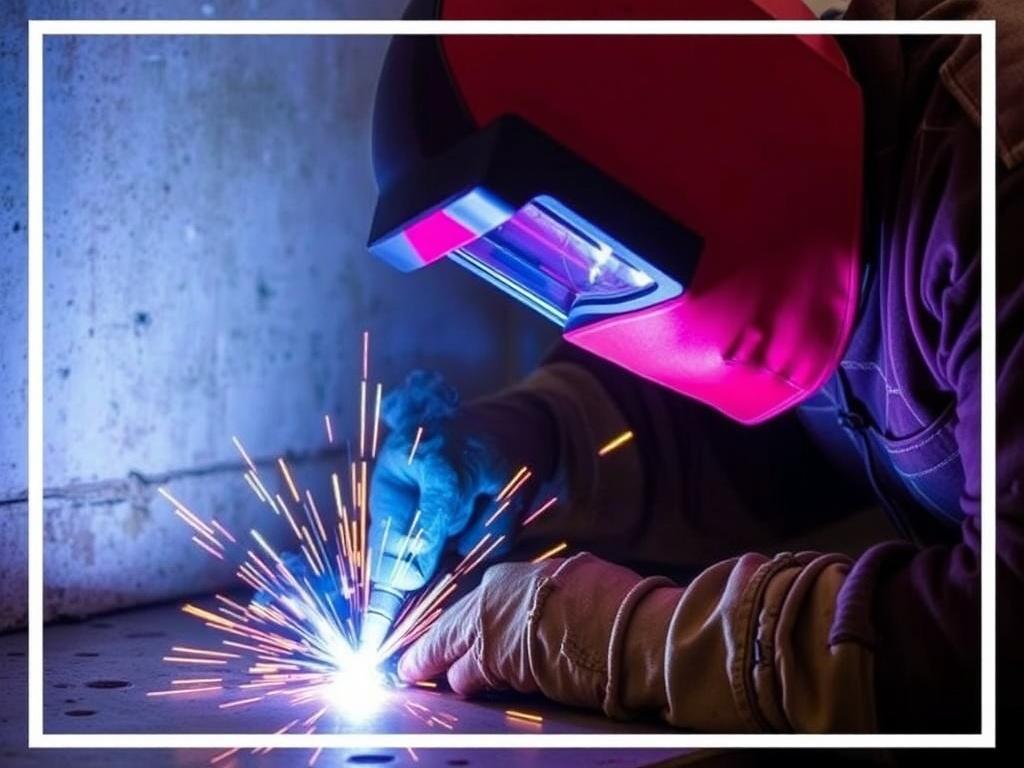
Welding is an art and science, a critical skill in countless industries—from construction to automotive manufacturing, shipbuilding to pipeline installation. Among various welding techniques, Flux-Cored Arc Welding, or FCAW, stands out for its versatility, efficiency, and robustness. It’s a process that has gained major traction over the past few decades due to its adaptability to various working conditions and materials. But when exactly should you choose FCAW, and what makes it unique compared to other welding methods?
In this extensive article, we’ll dive deep into the world of Flux-Cored Arc Welding. We’ll explore the basics of how the process works, the different types of FCAW, the materials best suited for it, and the ideal work environments. We’ll also compare FCAW to other popular welding techniques like MIG and TIG, helping you understand when FCAW is the perfect fit for your next project. By the end, you’ll have a comprehensive grasp of Flux-Cored Arc Welding and feel confident about when to use it.
What is Flux-Cored Arc Welding (FCAW)? Understanding the Basics
Before we discuss when to use FCAW, it’s important to understand what the process entails and how it works. Flux-Cored Arc Welding is a semi-automatic or automatic welding process that uses a continuously fed tubular electrode containing flux. This flux helps protect the weld pool from atmospheric contamination, which is crucial for making strong, clean welds.
The process works by establishing an electric arc between the consumable flux-cored wire electrode and the workpiece. This arc generates intense heat, melting both the wire and the base metal to form a strong weld. As the wire is consumed, the flux inside it melts and forms a gas shield and slag layer that protect the weld during solidification, ensuring a high-quality joint.
One of the biggest advantages of FCAW is that it can produce deep penetration and high deposition rates, which means it’s efficient and well-suited for thick materials and high-production applications.
How Does FCAW Compare to Other Welding Processes?
While FCAW shares similarities with MIG (Metal Inert Gas) welding because both use continuous wire feed, the major difference lies in the use of flux within the wire and the shielding method. MIG welding requires an external inert gas source, such as argon or CO2, to protect the weld pool. FCAW, on the other hand, can work with or without an external shielding gas thanks to the flux core inside the wire.
When compared to TIG (Tungsten Inert Gas) welding, FCAW is generally faster and better suited for thicker materials but may sacrifice some level of finesse and precision that TIG can provide.
The Types of Flux-Cored Arc Welding: Self-Shielded vs Gas-Shielded FCAW

Flux-Cored Arc Welding comes in two primary forms: self-shielded FCAW (FCAW-S) and gas-shielded FCAW (FCAW-G). Understanding these distinctions is key when deciding whether the process fits your project’s conditions.
Self-Shielded FCAW (FCAW-S)
Self-shielded FCAW uses a tubular wire filled with flux that generates its own shielding gas and slag to protect the weld pool. This means no external gas supply is needed, making it extremely portable and ideal for outdoor or windy environments where protecting shielding gas coverage would be difficult.
| Advantages of Self-Shielded FCAW | Drawbacks of Self-Shielded FCAW |
|---|---|
| Excellent for outdoor use and windy conditions | Produces more smoke and slag, requiring more cleanup |
| No need for an external gas tank, increasing portability | Sometimes produces welds with less cosmetic appeal |
| Good for thick materials – enables deep penetration | May have a slightly rougher weld finish |
Gas-Shielded FCAW (FCAW-G)
Gas-shielded FCAW uses an external shielding gas, usually CO2 or a mixture of argon and CO2, along with the flux-cored wire. The gas provides a cleaner shield, resulting in less slag and spatter compared to self-shielded FCAW. This method is often preferred in controlled environments like workshops.
| Advantages of Gas-Shielded FCAW | Drawbacks of Gas-Shielded FCAW |
|---|---|
| Produces cleaner welds with less slag and spatter | Less effective outdoors as shielding gas can be blown away by wind |
| Better control over bead appearance and weld quality | Requires gas tanks and associated equipment, reducing portability |
| Increased productivity in a stable, indoor environment | Somewhat higher cost of operation due to gas consumption |
When to Use Flux-Cored Arc Welding: Practical Applications and Considerations
Choosing the right welding process can make or break your project in terms of quality, speed, and cost. FCAW excels in certain applications and working environments, and here’s when you should definitely consider it.
1. Outdoor Welding or Windy Conditions
One of the most frequent challenges welders face is working outdoors where wind can dissipate the shielding gas in MIG or TIG welding, leading to contaminated welds with porosity and other defects. Since self-shielded FCAW does not rely on an external gas source, it’s often the method of choice for outdoor projects like construction sites, pipeline welding, or heavy equipment repair.
This capability saves time and money by eliminating the need for tents or windshields, and it’s why FCAW is heavily favored in rugged environments.
2. Thick Material Welding
FCAW provides deeper penetration and higher deposition rates than many other welding methods, making it a top candidate for welding thick steel plates or structural components. Projects in shipbuilding, heavy machinery manufacturing, or infrastructure like bridges often rely on FCAW for making strong, durable welds quickly.
3. High Production Environments
Since FCAW uses a continuously fed wire, the process is significantly faster than stick welding, which requires changing electrodes frequently. This makes FCAW highly efficient in production environments such as automobile manufacturing or fabrication shops where speed and consistency matter.
4. When Weld Strength Is Paramount
Structural integrity is critical in many industries, and the metallurgical properties of FCAW welds are well-regarded for their toughness and strength. This makes FCAW a wise choice for joints that will experience high stress or load, such as pressure vessels or heavy machinery.
Summary Table: When to Use FCAW
| Scenario | Why FCAW is Suitable |
|---|---|
| Outdoor/Windy Conditions | Self-shielded FCAW doesn’t require external gas which can be blown away |
| Thick Steel Plates | Deep penetration capability and high deposition rates |
| High Production Runs | Continuous wire feeding allows for faster welding speeds |
| Structural or Load-Bearing Joints | Produces strong, durable welds capable of withstanding stress |
Understanding the Materials and Metals Suited for FCAW
Not every welding method works the same on all metals and alloys. FCAW excels at welding specific types of steel but has limitations with some materials. Knowing what metals benefit the most from FCAW will guide your decision when choosing this process.
Carbon Steel
Carbon steel is the most common material welded using FCAW, especially structural steel, mild steel, and low alloy steel. The flux core and arc characteristics provide deep penetration and a strong bond, making it ideal for construction beams, pipelines, and heavy fabrication.
Stainless Steel
Gas-shielded FCAW wires are available for stainless steel welding, offering good corrosion resistance and clean welds. However, welding stainless steel with FCAW requires more skill and attention to parameters to avoid issues like warping or sensitization.
Other Metals
FCAW is generally not well-suited for non-ferrous metals like aluminum or copper. Processes like MIG and TIG are typically preferred for those materials due to better control and weld quality.
Summary List: Metals for FCAW
- Ideal: Carbon steel, mild steel, low alloy steels
- Possible with care: Stainless steel (gas-shielded FCAW)
- Not suitable: Aluminum, copper, magnesium
Advantages of Flux-Cored Arc Welding
FCAW offers several advantages that make it a welding method of choice in industries worldwide. Let’s explore these benefits in detail so you can understand why FCAW might be the perfect tool for your welding needs.
High Productivity and Speed
The continuous wire feed system combined with high deposition rates means welders can complete jobs faster than with stick welding or TIG. This translates into lower labor costs and faster turnaround times on projects, a critical advantage in commercial fabrication and construction.
Great for Outdoor Use
As covered earlier, self-shielded FCAW doesn’t require external gases, avoiding contamination in windy or adverse weather conditions. This makes it extremely versatile for fieldwork, maintenance, and repair.
Deep Penetration and Strong Welds
FCAW welds have excellent fusion with base metals, creating tough joints ideal for structural applications. This deep penetration is particularly effective on thick steel plates where other processes might require multiple passes.
Good Positional Welding
Flux-cored wires come in various formulations allowing FCAW to be performed in flat, horizontal, vertical, and overhead positions, giving welders flexibility and increasing job efficiency.
Challenges and Limitations of FCAW
No welding process is perfect, and FCAW has its share of challenges. Being aware of these will help you avoid common pitfalls and ensure you use FCAW appropriately.
Slag Removal
One downside to FCAW is the slag created by the flux, especially in self-shielded types. After welding, the slag must be chipped or brushed off, introducing an extra step and potential extra time compared to MIG welding.
Smoke and Fumes
FCAW generates more smoke and potentially hazardous fumes than MIG or TIG welding. Proper ventilation and protective equipment are essential to keep the work environment safe.
Equipment Cost and Setup
Though the welding machines are not significantly more expensive than MIG equipment, the additional irony is the need for flux-cored wire and, at times, shielding gas cylinders. This may increase operating costs slightly.
Potential Porosity Risk
If proper technique and parameters are not maintained, FCAW can be prone to porosity—tiny gas pockets trapped in the weld metal—which compromise strength and appearance.
How to Choose Between FCAW, MIG, TIG, and Stick Welding

With so many welding options available, how do you know when Flux-Cored Arc Welding is the best choice? Here’s a simple comparison to help guide you.
| Welding Process | Best Use Cases | Pros | Cons |
|---|---|---|---|
| FCAW (Flux-Cored Arc Welding) | Outdoor, thick steel, high-production | Portable (self-shielded), fast, deep penetration | Slag removal, smoke, requires skill |
| MIG (Metal Inert Gas) | Thin to medium metals, indoor use, clean welds | Easy to learn, clean welds, less slag | Shielding gas required, sensitive to wind |
| TIG (Tungsten Inert Gas) | Thin metals, precise, cosmetic welds | Strong, clean, versatile metals | Slow, skill-intensive, less portable |
| Stick Welding (SMAW) | Outdoor use, heavy steel, repair | Low equipment cost, portable | Slower, more cleanup, less deposit rate |
The Step-By-Step FCAW Process for Beginners
If you’re new to Flux-Cored Arc Welding and want to get a quick overview of the process, here’s a simple guide to help you understand what’s involved.
- Prepare the Workpiece: Clean the metal surface to remove rust, oil, paint, or dirt for best weld quality.
- Set Up Equipment: Install the appropriate flux-cored wire, set voltage and current according to wire diameter and material thickness.
- Adjust Shielding Gas (if gas-shielded): Connect gas cylinder and set flow rate properly if you’re using FCAW-G.
- Position the Welder: Get a stable and comfortable position appropriate for the welding job (flat, vertical, overhead, etc).
- Strike the Arc: Hold the welding gun close to the workpiece, then start the wire feed to strike and maintain the arc.
- Weld the Joint: Move the gun steadily at the right angle and speed to produce consistent weld beads.
- Clean the Weld: Once finished, chip off slag and brush the weld to expose the finished joint.
Safety Tips for Flux-Cored Arc Welding

As with any welding process, FCAW has safety considerations you must take seriously to protect yourself and those around you.
- Wear Proper PPE: Use a welding helmet with the correct shade, flame-resistant clothing, gloves, and safety glasses.
- Ensure Good Ventilation: Welding fumes from FCAW can be harmful; work in well-ventilated areas or use fume extraction.
- Avoid Contact with Hot Metal: Use tongs or pliers to move hot metal to prevent burns.
- Fire Safety: Keep combustible materials away from the welding area and have fire extinguishing equipment on hand.
- Electrical Safety: Inspect equipment for damage, work on dry surfaces, and avoid touching live electrical parts.
Conclusion: Is Flux-Cored Arc Welding Right for Your Project?
Flux-Cored Arc Welding (FCAW) is a powerful, versatile welding method that combines speed, strength, and portability in ways few other techniques can match. Its ability to work effectively outdoors without external gas and to handle thick, tough materials makes it invaluable across many industries.
However, it’s not a one-size-fits-all solution. The additional slag clean-up, smoke, and equipment costs mean you need to weigh your project conditions carefully. If you’re working in outdoor, heavy-duty, or high-production environments, FCAW is often your best bet. If you need cleaner welds indoors or on thin metals, consider MIG or TIG instead.
Understanding when to use Flux-Cored Arc Welding empowers you to choose the right tool for the job—improving quality, efficiency, and safety in your welding projects. Whether you’re a professional welder or a DIY enthusiast, mastering FCAW adds a valuable skill that can open doors to countless applications.
So next time you face a challenging weld, think about FCAW. It just might be the game-changer you need.
